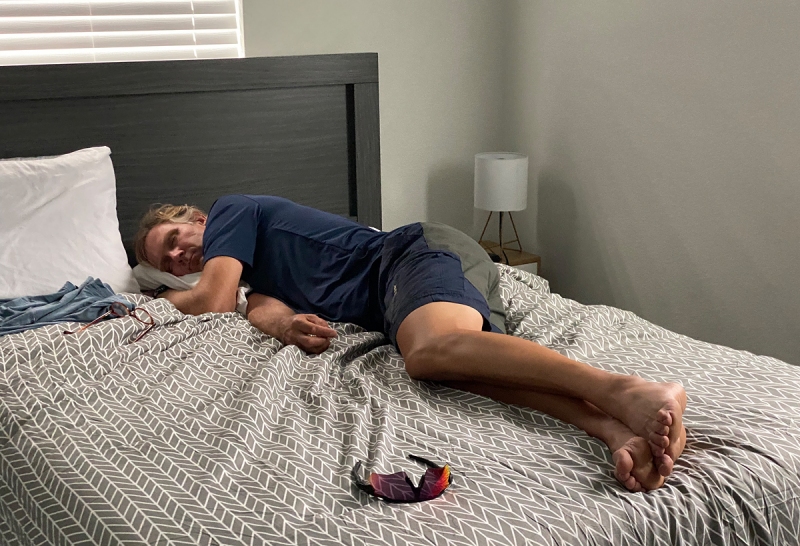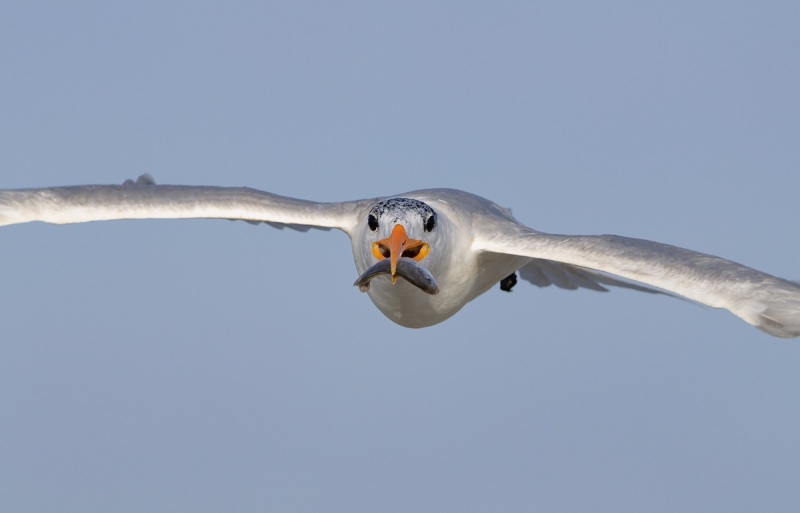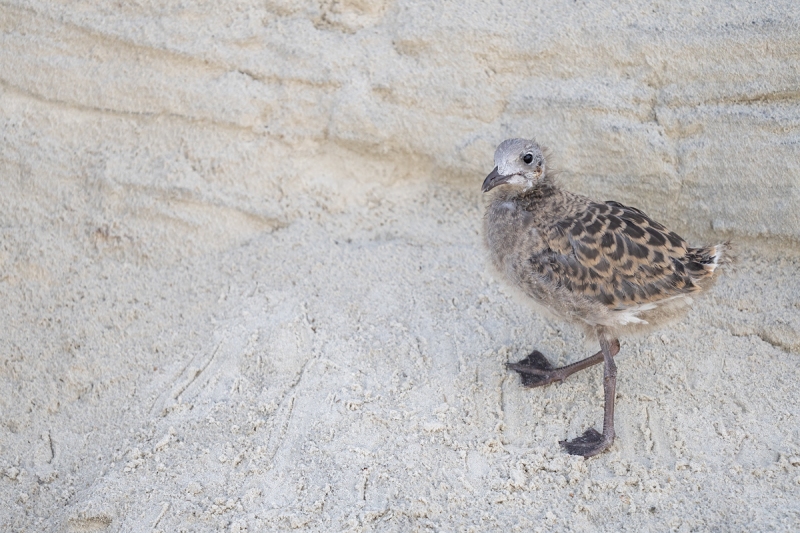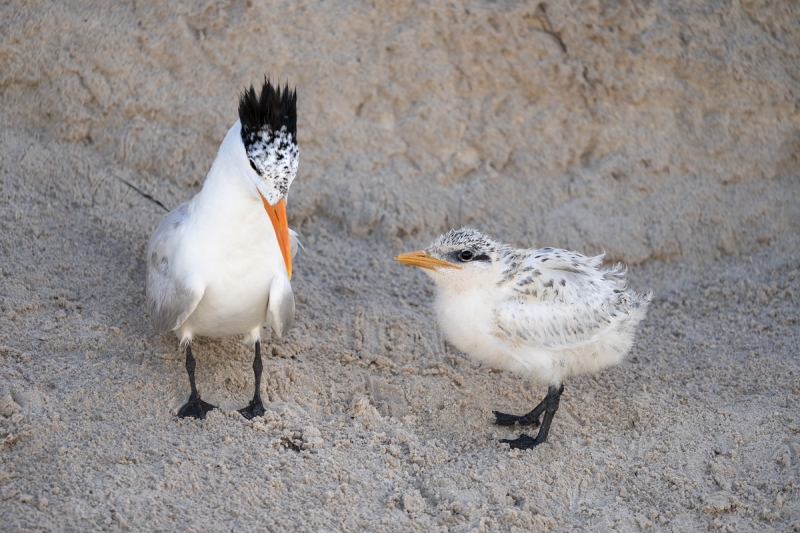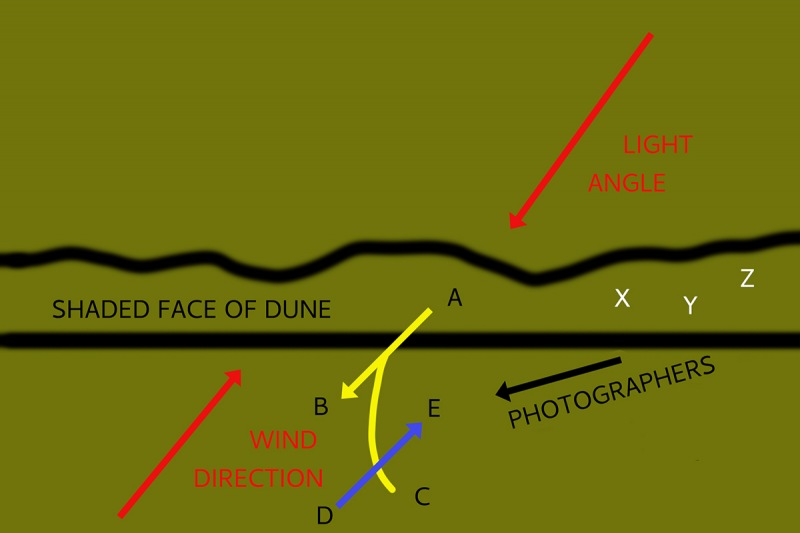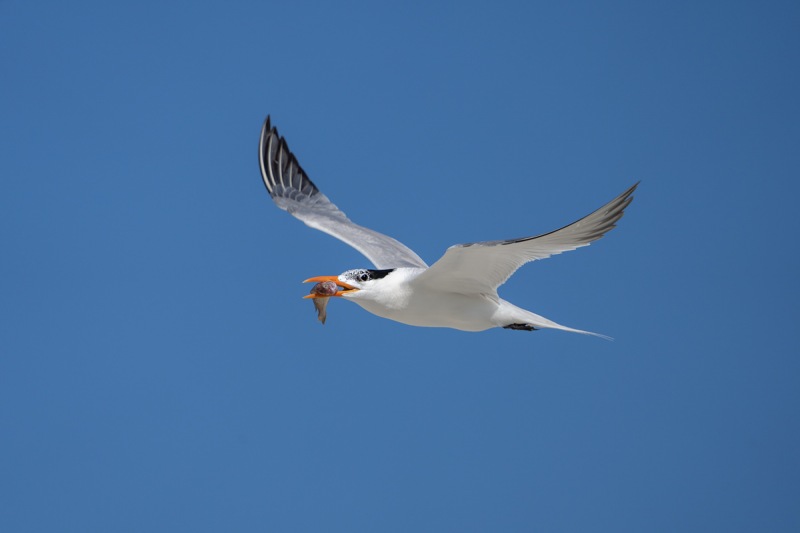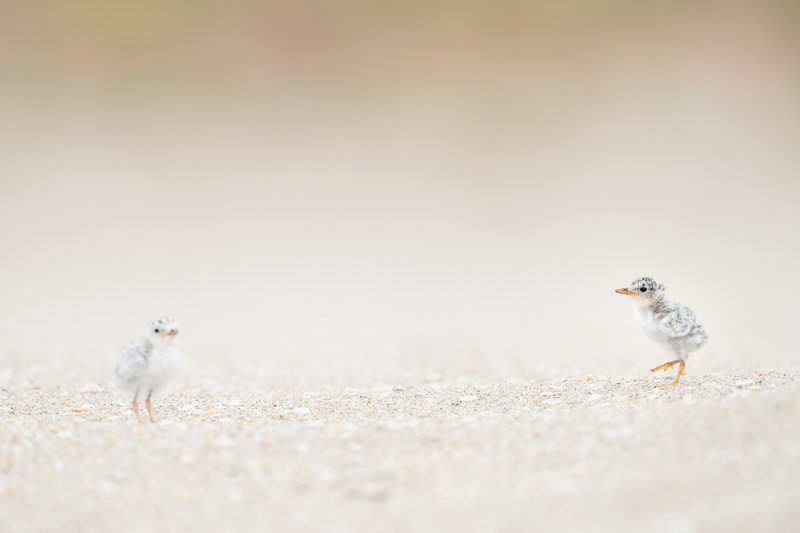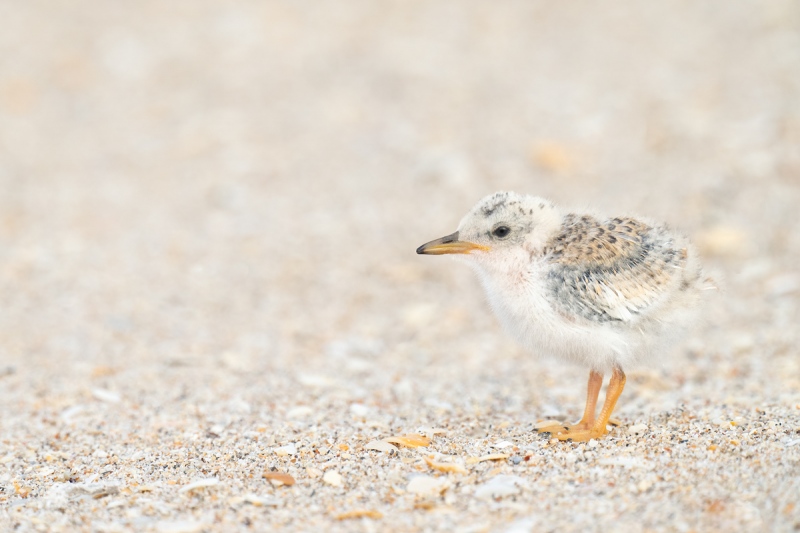June 30th, 2021 What’s Up?
We enjoyed a phenomenal morning of bird photography with a southeast wind and mostly sunny skies. It clouded over in the afternoon so we headed back early and enjoyed a phenomenal afternoon of bird photography with the world as a huge soft box. Between the four of us we created many, many thousands of images. Including more than a few good ones. Mike De Rosa got a killer sequence of a Laughing Gull stealing a long skinny fish from an adult tern. After a brief tug of war, each was partially rewarded as the fish broke in two. As mentioned in yesterday’s blog post, blue skies in the afternoon with an east wind is death on bird photography. The cloudy bright conditions were perfect for anything you chose to do. And we did a lot.
Did I mention that this new spot is one of the most incredible locations I have ever had the privilege of visiting in my almost 38 years of photographing birds? My tally for the day was 4616 yet to be edited images. But I did take a peek at a few good ones, including today’s featured image. Mike De Rosa created 6993 photographs! And Clemens created more than 8000 .CR3 file with his R5; no wonder he was so tired. Scroll down for proof of that.
This just in (6:03am): I kept 400 images after the first edit of our Tuesday sessions.
Today is Wednesday 30 June 2021. The forecast for Jacksonville this morning is for partly cloudy skies with scattered thunderstorms and the persistent wind from the east. The good news if there is thunder and lightning, is that there is tons of action just twenty yards from where we park. But, as was the case yesterday morning, the sky is mostly clear as we drive to the park at 5:35am. The terns sure look great with sun on them and blue sky backgrounds … Wherever you are, and whatever you are doing, I hope that you too have a great day.
This blog post took more than an hour to prepare and makes 185 consecutive days with a new one. Please remember that if an item — a Delkin flash card, or a tripod head — for example, that is available from B&H and/or Bedfords and is also available in the BAA Online Store, it would be great if you opt to purchase from us. We will match any price. Please remember also to use my B&H affiliate links or to save 3% at Bedfords by using the BIRDSASART discount code at checkout. Doing either often earns you free guides and/or discounts. And doing so always earns my great appreciation.
Please Remember
With income from IPTs now close to zero, please, if you enjoy and learn from the blog, remember to use one of my two affiliate programs when purchasing new gear. Doing so just might make it possible for me to avoid having to try to get a job as a Walmart greeter and will not cost you a single penny more. And if you use Bedfords and remember to enter the BIRDSASART code at checkout, you will save 3% on every order and enjoy free second-day air shipping. In these crazy times — I am out at least forty to sixty thousand dollars so far due to COVID 19 (with lots more to come) — remembering to use my B&H link or to shop at Bedfords will help me out a ton and be greatly appreciated. Overseas folks who cannot order from the US because of import fees, duties, and taxes, are invited to help out by clicking here to leave a blog thank you gift if they see fit.
New and Better Bedfords Discount Policy!
You can now save 3% on all of your Bedfords photo gear purchases by entering the BIRDSASART coupon code at checkout. Your discount will be applied to your pre-tax total. In addition, by using the code you will get 2nd day air shipping via Fed Ex.
Grab a Nikon AF-S Teleconverter TC-14E III and save $14.99. Purchase a Canon EOS R5 and your discount will be $116.97. Purchase a Sony FE 600mm f/4 GM OSS lens and save a remarkable $389.94! Your Bedford’s purchase no longer needs to be greater than $1,000.00 for you to receive a discount. The more you spend, the more you save.
Money Saving Reminder
Many have learned that if you need a hot photo item that is out of stock at B&H and would enjoy free second-day air shipping, your best bet is to click here, place an order with Bedfords, and enter the coupon code BIRDSASART at checkout. If an item is out of stock, contact Steve Elkins via e-mail or on his cell phone at (479) 381-2592 (Central time). Be sure to mention the BIRDSASART coupon code and use it for your online order to save 3% and enjoy free 2nd-day air shipping. Steve has been great at getting folks the hot items that are out of stock at B&H and everywhere else. The wait lists at the big stores can be a year or longer for the hard to get items. Steve will surely get you your gear long before that. For the past year, he has been helping BAA Blog folks get their hands on items like the SONY a9 ii, the SONY 200-600 G OSS lens, the Canon EOS R5, the Canon RF 100-500mm lens, and the Nikon 500mm PF. Steve is personable, helpful, and eager to please.


Gear Questions and Advice
Too many folks attending BAA IPTs (remember those?) and dozens of photographers whom I see in the field and on BPN, are–out of ignorance–using the wrong gear especially when it comes to tripods and more especially, tripod heads… Please know that I am always glad to answer your gear questions via e-mail
|
|
Image #1: Clemens Knackered!
|
How Torrid Was The Action?
The action at the Royal Tern/Laughing Gull colony on Tuesday morning was so torrid that Clemens Van der Werf took a nap after brunch! That was the first time I had ever seen him do such a thing. And on the way home after an equally fabulous afternoon session, Clemens said, “I’m exhausted!” Now that is torrid action.
|
|
|
This image was created on 29 June 2021 on a beach near Jacksonville, FL. I used the hand held Sony FE 200-600mm f/5.6-6.3 G OSS lens (at 415mm) and The One, the Sony Alpha 1 Mirrorless digital camera. ISO 500. Exposure determined via Zebras with ISO on the rear dial: 1/3200 sec. at f/6.3 (wide open) in Manual mode. AWB at 7:31am on a sunny morning.
Wide/AF-C was active at the moment of exposure and performed perfectly. Click on the image to see a the spectacular sharpness and fine detail.
Image #2: Royal Tern with food for its young
|
SONY Alpha a1 AF Continues to Astound
Yesterday, SONY released a firmware update that is supposed to eliminate the electronic viewfinder blackout problems. In addition, it is supposed to improve eye tracking with birds in flight and AF accuracy across the board. That is indeed scary as the AF system of the a1 is already the best I have ever used. Time will tell on both of those. In the meantime, a fix for the EVF blackouts is long overdue. Will it work? I’m from Missouri …
From Barbara White via e-Mail
Wow, I just gotta say – I learn so much from the SONY Alpha a1 Set-up and Info group! My camera is on my desk, and I’m always picking it up and changing something that I’ve read about in the e-mails.
Thanks, Barbara
From Janet Horton via e-Mail
Hi Artie, Mystery solved. Yes, I was able to replicate what you did. I forgot that you have to set self-timer using the upper dial. I am used to that being just a selection in Menu.
Thanks much, Janet
SONY Alpha a1 Set-up and Info Group
The SONY Alpha a1 Set-up and Info Group is going great guns as more and more folks chime in with thoughtful questions and experience-based answers. As the a1 is becoming more readily available, more and more folks are getting their hands on this amazing body. With two folks joining yesterday, we are now up to an astounding 62 blessed photographers! Early on, we discussed the myriad AF options. I gave my opinion as to the best one for flight and general bird photography. More recently, we have been in contact with folks at SONY sharing our thoughts, experiences, and frustrations with the EVF blackout problem.
All who purchased their Alpha a1 bodies via a BAA affiliate link will receive a free subscription to the Sony Alpha a1 Set-Up and Info Updates after shooting me their receipts via e-mail. (Note: it may take me several days to confirm B&H orders.) This same service may be purchased by anyone with an a1 body via a $150.00 PayPal sent to birdsasart@verizon.net indicating payment for Alpha a1 Info Updates. Alternatively, folks can call Jim weekdays at 1-863-692-0906 to pay via credit card. New members will receive composite e-mails that summarize all previous discussions.
Typos
With all blog posts, feel free to e-mail or to leave a comment regarding any typos or errors.
June 29th, 2021 What’s Up?
We had a great first morning at the Jacksonville tern and gull colony with mostly cloudy skies and a northeast wind. Mike DeRosa was using his a1/200-600 rig for the first time and made some outstanding images of Royal Tern in flight carrying fish for the numerous chicks. Many multiple IPT veteran Monte Brown did the same with his Canon R5/100-500 combo. Clemens used his R5 with his Canon 600 II and his 100-400 II for handheld flight. I was able to find a mint Canon 600mm f/4 L IS III lens for Clemens for $9500.00. That after the buyer was offered $6600.00 by one of the big NYC camera stores. Mike made 5700 images on the first morning. Clemens created 250 GBs worth of photos. Monte about 120 GBs of terns and gulls. I was low-hook with 3924 images. I have not yet completed the first edit.
Mike discovered a tiny, dying Royal Tern chick on the open beach. We surmised that it was grabbed by a gull and then dropped. Amazingly, none of the thousands of Laughing Gulls or the few first summer Herring Gulls went after it. We photographed it, and then picked it up and placed it under a wooden palette where it could die in peace. I almost forget to mention: our first morning session lasted until 12:30 pm; we had stayed out for five and one half hours. Two folks needed to take a break so that they could get back to lifting their lenses again!
Today is Tuesday 29 June. The forecast for Jacksonville for this morning is partly to mostly cloudy with a Southeast wind. At 5:33am the sky was totally clear … Wherever you are, and whatever you are doing, I hope that you too have a great day
This blog post took more than two hours to prepare and makes 184 consecutive days with a new one. Please remember that if an item — a Delkin flash card, or a tripod head — for example, that is available from B&H and/or Bedfords and is also available in the BAA Online Store, it would be great if you opt to purchase from us. We will match any price. Please remember also to use my B&H affiliate links or to save 3% at Bedfords by using the BIRDSASART discount code at checkout. Doing either often earns you free guides and/or discounts. And doing so always earns my great appreciation.
Please Remember
With income from IPTs now close to zero, please, if you enjoy and learn from the blog, remember to use one of my two affiliate programs when purchasing new gear. Doing so just might make it possible for me to avoid having to try to get a job as a Walmart greeter and will not cost you a single penny more. And if you use Bedfords and remember to enter the BIRDSASART code at checkout, you will save 3% on every order and enjoy free second-day air shipping. In these crazy times — I am out at least forty to sixty thousand dollars so far due to COVID 19 (with lots more to come) — remembering to use my B&H link or to shop at Bedfords will help me out a ton and be greatly appreciated. Overseas folks who cannot order from the US because of import fees, duties, and taxes, are invited to help out by clicking here to leave a blog thank you gift if they see fit.
New and Better Bedfords Discount Policy!
You can now save 3% on all of your Bedfords photo gear purchases by entering the BIRDSASART coupon code at checkout. Your discount will be applied to your pre-tax total. In addition, by using the code you will get 2nd day air shipping via Fed Ex.
Grab a Nikon AF-S Teleconverter TC-14E III and save $14.99. Purchase a Canon EOS R5 and your discount will be $116.97. Purchase a Sony FE 600mm f/4 GM OSS lens and save a remarkable $389.94! Your Bedford’s purchase no longer needs to be greater than $1,000.00 for you to receive a discount. The more you spend, the more you save.
Money Saving Reminder
Many have learned that if you need a hot photo item that is out of stock at B&H and would enjoy free second-day air shipping, your best bet is to click here, place an order with Bedfords, and enter the coupon code BIRDSASART at checkout. If an item is out of stock, contact Steve Elkins via e-mail or on his cell phone at (479) 381-2592 (Central time). Be sure to mention the BIRDSASART coupon code and use it for your online order to save 3% and enjoy free 2nd-day air shipping. Steve has been great at getting folks the hot items that are out of stock at B&H and everywhere else. The wait lists at the big stores can be a year or longer for the hard to get items. Steve will surely get you your gear long before that. For the past year, he has been helping BAA Blog folks get their hands on items like the SONY a9 ii, the SONY 200-600 G OSS lens, the Canon EOS R5, the Canon RF 100-500mm lens, and the Nikon 500mm PF. Steve is personable, helpful, and eager to please.


Gear Questions and Advice
Too many folks attending BAA IPTs (remember those?) and dozens of photographers whom I see in the field and on BPN, are–out of ignorance–using the wrong gear especially when it comes to tripods and more especially, tripod heads… Please know that I am always glad to answer your gear questions via e-mail
|
|
|
This image was created on 27 June 2021 on a beach near Jacksonville, FL. I used the hand held Sony FE 200-600mm f/5.6-6.3 G OSS lens (at 600mm) and The One, the Sony Alpha 1 Mirrorless digital camera. ISO 1000. Exposure determined via Zebras with ISO on the rear dial: 1/1000 sec. at f/6.3 (wide open) in Manual mode. AWB at 5:44pm in the shade on a bright sunny afternoon.
Wide/AF-C was active at the moment of exposure and performed perfectly. Click on the image to see a larger version.
Image #1: Laughing Gull, large chick
|
An Impossible Situation …
I knew before we left our AirBnb for our first afternoon at the beach that conditions were going to be pretty much impossible. There was a stiff onshore breeze from the east/northeast with a clear blue sky and the sun headed down in the southwest — classic wind against sun conditions. My number one rule for such situations is to find subjects in the shade. So that is exactly what we did. Scroll down to the explanatory map.
|
|
|
This image was also created on 27 June 2021 on a beach near Jacksonville, FL. Again, I used the hand held Sony FE 200-600mm f/5.6-6.3 G OSS lens (at 571mm) and The One, the Sony Alpha 1 Mirrorless digital camera. ISO 1250. Exposure determined via Zebras with ISO on the rear dial: 1/1600 sec. at f/6.3 (wide open) in Manual mode. AWB at 6:07pm in the shade on a bright sunny afternoon.
Wide/AF-C was active at the moment of exposure and performed perfectly. Click on the image to see a larger version.
Image #2: Royal Tern with chick
|
The Colony
A few years ago it was reported that there are about five thousand pairs of Royal Terns at this location along with four thousand pairs of Laughing Gulls and a few dozen nesting Brown Pelicans. Today it seems that the Laughing Gulls far outnumber the royals. There is also a smattering of nesting Sandwich Terns. There are hundreds of terns and gulls in the flight from dawn till dusk; the air is filled with their screams and calls. There are many young gulls on the lower part of the dunes and the beach, but most of the young terns are still atop the dunes. Tomorrow morning we break out the ladder.
The Beach Map
Note the classic wind against sun conditions. With the wind blowing right at the sun, nearly all of the birds will take off, land, and fly into the wind. Birds on the beach will also face into the wind. That leaves the photographer looking for birds in the shade (X, Y, Z, or anywhere on the completely shaded face of the eight to ten feet tall dune), looking for birds that turn in flight (taking off from A, heading toward B, and then turning to their left and flying to C), or looking for birds returning to the colony (the blue line). Now, not many birds turned left, but there was a pattern. The few that did provided our only chances of photographing birds in fight anywhere down sun angle.
|
|
|
This image was also created on 27 June 2021 on a beach near Jacksonville, FL. Again, I used the hand held Sony FE 200-600mm f/5.6-6.3 G OSS lens (at 600mm) and The One, the Sony Alpha 1 Mirrorless digital camera. ISO 400. Exposure determined via Zebras with ISO on the rear dial: 1/3200 sec. at f/7.1 (wide open) in Manual mode. AWB at 5:18pm on a bright sunny afternoon.
Wide/AF-C was active at the moment of exposure and performed perfectly. Click on the image to see a larger version.
Image #4: Royal Tern — adult in flight with fish for chick
|
Success
Thanks to Clemens Van der Werf who first detected the pattern. The bird in Image #4 was one of those that turned to its left after it took flight. Note the huge difference in exposures from the shaded birds to the bird in flight. Our first afternoon session was an exploratory so I headed to the beach with only the a1/200-600. I brought both the 200-600 and the tripod-mounted 600mm f/4 out for our morning session, and even used the 70-200mm f/2.8 lens successfully for flight on that very cloudy morning.
Typos
With all blog posts, feel free to e-mail or to leave a comment regarding any typos or errors.
June 28th, 2021 What’s Up?
The Royal Tern/Laughing Gull/Brown Pelican rookery near Jacksonville was breathtakingly amazing. The beach is gorgeous, and there are an estimated 10,000 pairs of nesting birds in the protected dunes. With clear blue skies and a stiff onshore wind from the east (wind against sun …), photography was very difficult at best.
With the same forecast for this morning — 27 June 2021, I told everyone to bring extra cards and lots of batteries. We are gonna kill ’em for sure. Wherever you are, and whatever you are doing, I hope that you too have a great day
This blog post took about an hour to prepare and makes 183 consecutive days with a new one. Please remember that if an item — a Delkin flash card, or a tripod head — for example, that is available from B&H and/or Bedfords and is also available in the BAA Online Store, it would be great if you opt to purchase from us. We will match any price. Please remember also to use my B&H affiliate links or to save 3% at Bedfords by using the BIRDSASART discount code at checkout. Doing either often earns you free guides and/or discounts. And doing so always earns my great appreciation.
Please Remember
With income from IPTs now close to zero, please, if you enjoy and learn from the blog, remember to use one of my two affiliate programs when purchasing new gear. Doing so just might make it possible for me to avoid having to try to get a job as a Walmart greeter and will not cost you a single penny more. And if you use Bedfords and remember to enter the BIRDSASART code at checkout, you will save 3% on every order and enjoy free second-day air shipping. In these crazy times — I am out at least forty to sixty thousand dollars so far due to COVID 19 (with lots more to come) — remembering to use my B&H link or to shop at Bedfords will help me out a ton and be greatly appreciated. Overseas folks who cannot order from the US because of import fees, duties, and taxes, are invited to help out by clicking here to leave a blog thank you gift if they see fit.
New and Better Bedfords Discount Policy!
You can now save 3% on all of your Bedfords photo gear purchases by entering the BIRDSASART coupon code at checkout. Your discount will be applied to your pre-tax total. In addition, by using the code you will get 2nd day air shipping via Fed Ex.
Grab a Nikon AF-S Teleconverter TC-14E III and save $14.99. Purchase a Canon EOS R5 and your discount will be $116.97. Purchase a Sony FE 600mm f/4 GM OSS lens and save a remarkable $389.94! Your Bedford’s purchase no longer needs to be greater than $1,000.00 for you to receive a discount. The more you spend, the more you save.
Money Saving Reminder
Many have learned that if you need a hot photo item that is out of stock at B&H and would enjoy free second-day air shipping, your best bet is to click here, place an order with Bedfords, and enter the coupon code BIRDSASART at checkout. If an item is out of stock, contact Steve Elkins via e-mail or on his cell phone at (479) 381-2592 (Central time). Be sure to mention the BIRDSASART coupon code and use it for your online order to save 3% and enjoy free 2nd-day air shipping. Steve has been great at getting folks the hot items that are out of stock at B&H and everywhere else. The wait lists at the big stores can be a year or longer for the hard to get items. Steve will surely get you your gear long before that. For the past year, he has been helping BAA Blog folks get their hands on items like the SONY a9 ii, the SONY 200-600 G OSS lens, the Canon EOS R5, the Canon RF 100-500mm lens, and the Nikon 500mm PF. Steve is personable, helpful, and eager to please.


Gear Questions and Advice
Too many folks attending BAA IPTs (remember those?) and dozens of photographers whom I see in the field and on BPN, are–out of ignorance–using the wrong gear especially when it comes to tripods and more especially, tripod heads… Please know that I am always glad to answer your gear questions via e-mail
|
|
|
This image was created on 14 June 2021 on a beach in Southeast Florida. Standing at full height, I used the Induro GIT 304L/ Levered-Clamp FlexShooter Pro-mounted-Sony FE 600mm f/4 GM OSS lens with the Sony FE 1.4x Teleconverter and The One, the Sony Alpha 1 Mirrorless digital camera. ISO 1600. Exposure determined via Zebras with ISO on the rear dial: 1/2000 sec. at f/5.6 (wide open) in Manual mode. AWB at 8:20am on a cloudy morning.
Wide/AF-C was active at the moment of exposure and performed very well by nailing tern’s cap. As this is another healthy crop, about, the depth-of-field was provided by the distance to the subject. Click on the image to see a larger version.
Least Tern chick about three days old with sibling
|
Tiny Little Ones
These two little chicks on a big beach are about three days old. They were in their eggs for about 21 days and will be starting to fly when they are about three weeks old. Tern chicks are precocious: within an hour of hatching, their feathers are dry and their eyes are open; they are capable of staggering a short distance away from the nest. They leave the nest scrape at about two days old. The coloring is cryptic. The birds are well camouflaged when they flatten themselves on the beach in the face of danger.
Growing Quickly!
The tiny chicks grow very rapidly, approximately doubling their weight by day four and tripling it when they are six days old. This bird probably weight about 25 grams (less than a single ounce!)
Typos
With all blog posts, feel free to e-mail or to leave a comment regarding any typos or errors.
|
|




